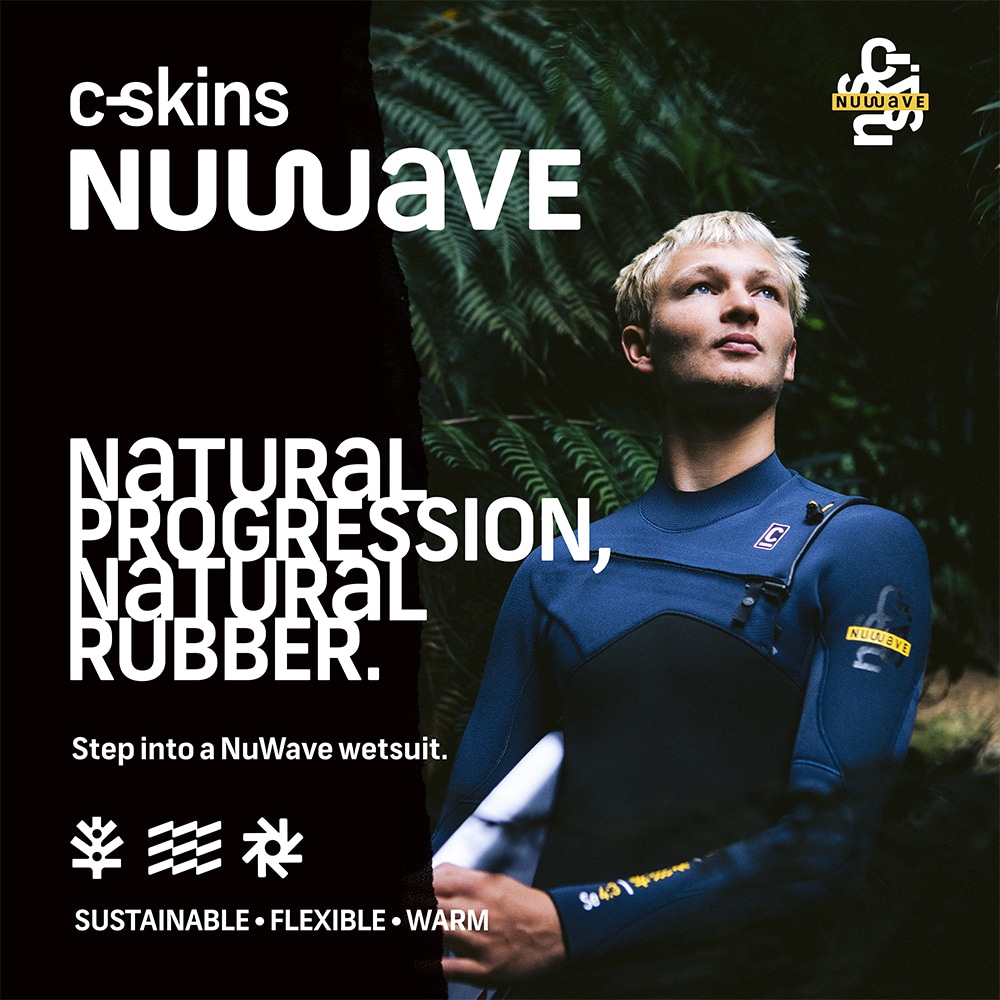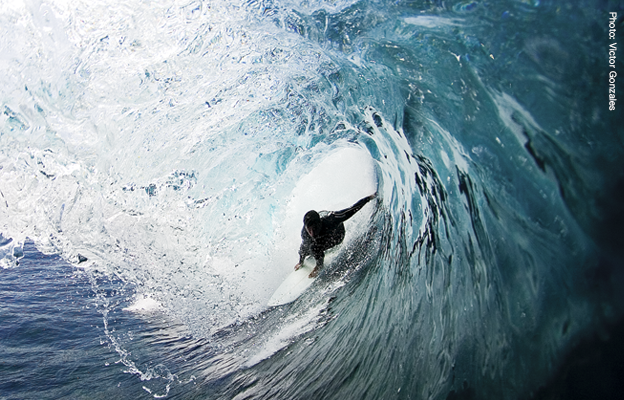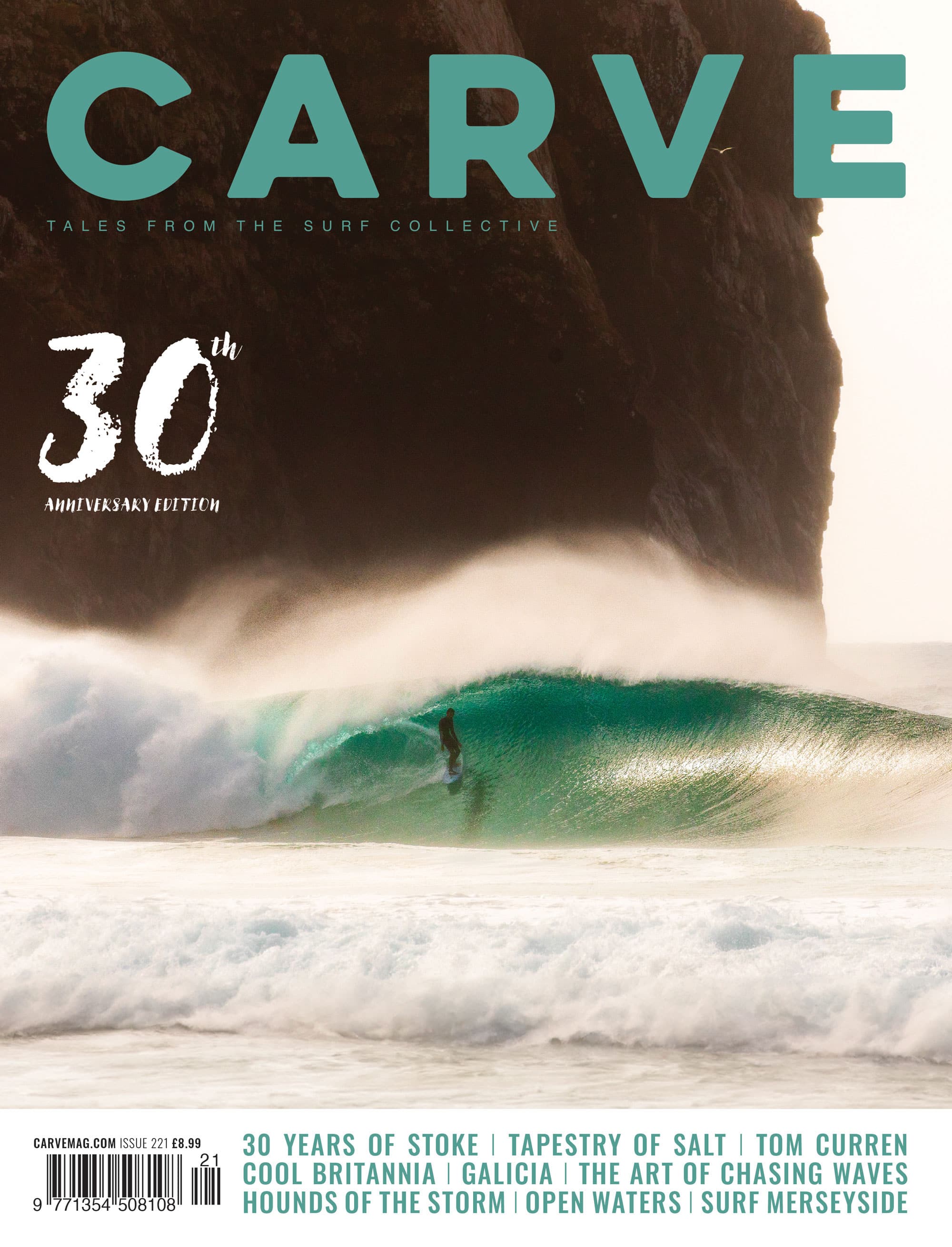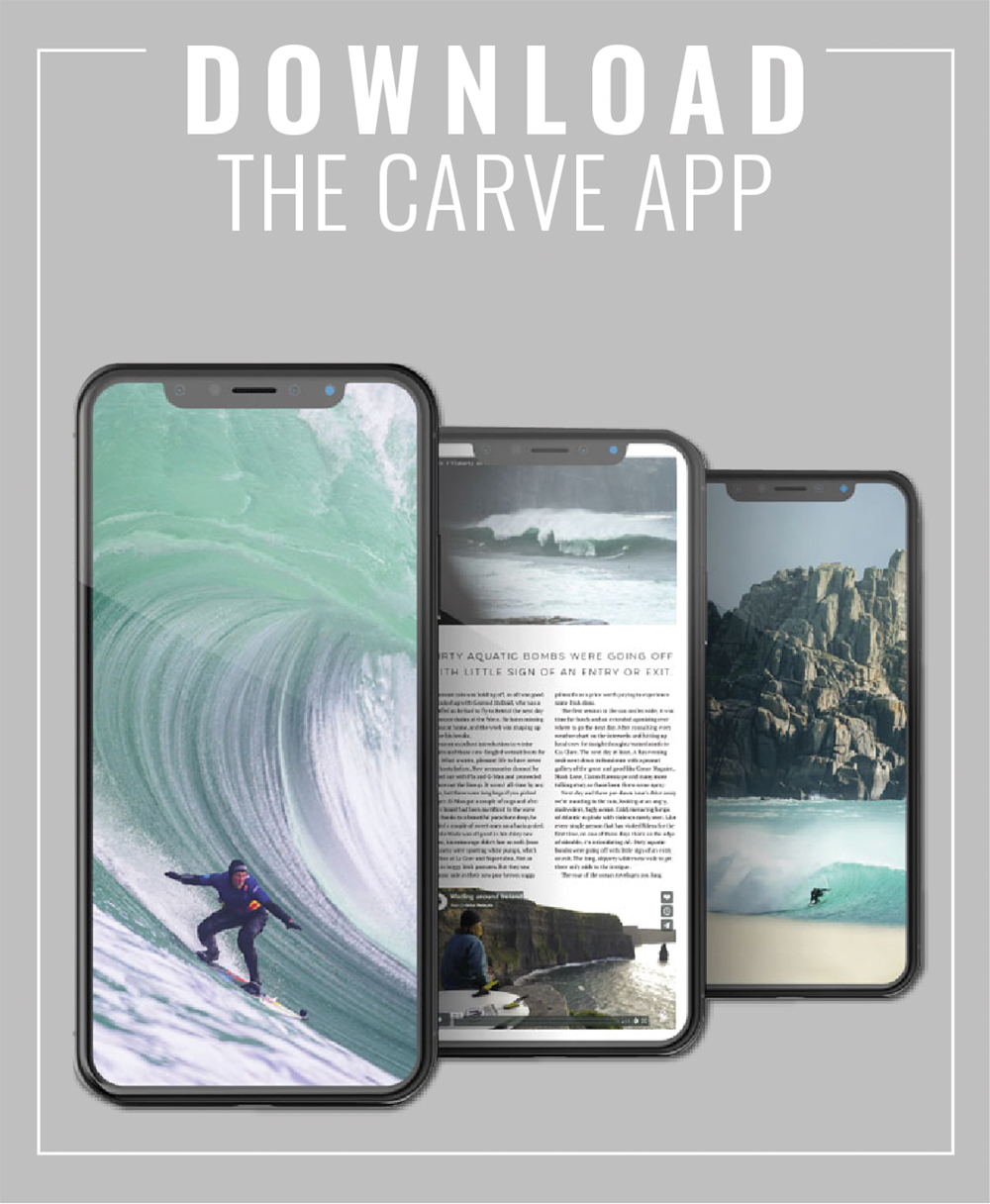Ninety kilometres off the coast of Morocco lie a group of Spanish islands which have become synonymous with heavy waves – the Canary Islands. Entirely volcanic in origin, they’re blessed with year-round sunshine and epic waves. Dubbed the ‘Atlantic Hawaii’, some of the Canaries’ urchin-infested slabs hold incredibly heavy waves with barrels as thick as hydrodynamic theory allows. The islands are surrounded by deep water so incoming swells slam in with full Atlantic power producing thick, heavy waves which require 100 percent commitment from the second you think about getting to your feet. What comes next depends on your ability to control your rail and line up the section; if you don’t, you’ll suffer the consequences. From playful four-foot peelers to top-to-bottom quadruple-overhead monsters, Canarian reefs tick all the boxes. There’s also a selection of less intense beach breaks which can be fun, although the reefs are what the crowds froth over.
The islands hoover up swell from all directions, but most of the big winter swells come from slow-moving North Atlantic lows which churn out a steady supply of northwest groundswell throughout the winter months. Hurricane swells from the east coast of the US can also reach the islands if the storms peel away from the continent early and don’t dissipate too soon. Trade winds blow almost all year round, predominantly from the north east; the winds tend to be lightest in October and November.
There are seven main islands in the Canaries, and each offers a selection of surf spots ranging from good to world-class. Lanzarote and Fuerteventura are the furthest east of the islands and they’re also the least mountainous; consequently they offer the best access to the coastline and they have the highest concentration of breaks.
Lanzarote’s heaviest and best known spots lie in a cluster around the fishing village of La Santa on the north coast. El Quemao, a crunching left next to the village’s tiny harbour, bears more than a passing resemblance to its Pacific cousin Pipeline. Offshore on a southeast Sirocco wind, El Quemao will tear you a new orifice if you don’t treat it with the utmost respect. The takeoff is always steep, and you’ll need to nail a heavy bottom turn to line up the second section which can sometimes suck almost dry. El Quemao is shallow, fast, heavy and will give you a shot of adrenaline you won’t forget. The locals are a tight-knit bunch who aren’t too wild about visitors, whether you rip or not. Show respect and it’ll improve your chances, but even then they won’t welcome you with open arms.
A kilometre along the coast is La Santa Right (known locally as Morro Negro), a long, powerful righthander which breaks along a boulder-strewn point. It’ll hold waves up to 15 feet and can be world-class on its day, with big open walls begging to be carved to bits. The inside can sometimes get bowly, with the odd barrel to be had. The current down the point is quite strong and the paddle outs are wearing, but catch it on a perfect six-foot day and you’ll be hooting your head off. Get there early to beat the crowds.
Other quality spots on Lanza’s north shore include the heavily localised La Santa Left (‘The Slab’) and San Juan, a long smashable left.
On straight north swells a cluster of reefs on the east side of the island turn on. Jameos del Agua, Punta de Mujeres and Arrieta offer softer waves which will appeal to intermediate surfers more than the bone-crunchers around La Santa.
The long arc of sand at Famara provides a beach break option for beginners, although wave quality is dependent on the state of the banks. If the swell is from the north or northeast, another beachie to check out is Orzola on the far northern tip of the island.
Most of Fuerteventura’s best waves can be found at the northern end of the island, around the resort town of Corralejo. The Bubble, a few kilometres west of the town, is a sick A-frame which offers hollow lefts and rights breaking over a sharp, shallow reef. It works best on a northwest swell with a southeasterly wind. Deep-water waves jack up quickly and morph into good-length pits for those lucky enough to snag one off the locals. The Bubble is one of the busiest spots on the island and the locals aren’t too willing to abide by general etiquette, so expect drop-ins when it’s on, even if you have priority and have been quietly minding your own business for a while. Hang around, be nice and let your surfing do the talking, then you’ll have a better chance of taking one of the well-protected set waves. And get in early to avoid the crowds.
Other challenging spots for experienced surfers include Las Lagunas (‘Spew Pits’), a gnarly righthand barrel near Cotillo; and Lobos, a long right point that peels down the side of a volcano, a short ferry hop from Corralejo. Intermediate level surfers can find fun waves at some of the less demanding reefs like Rocky Point, as well as a selection of beach breaks like Glass Beach, Cotillo and Playa de Esquinzo.











